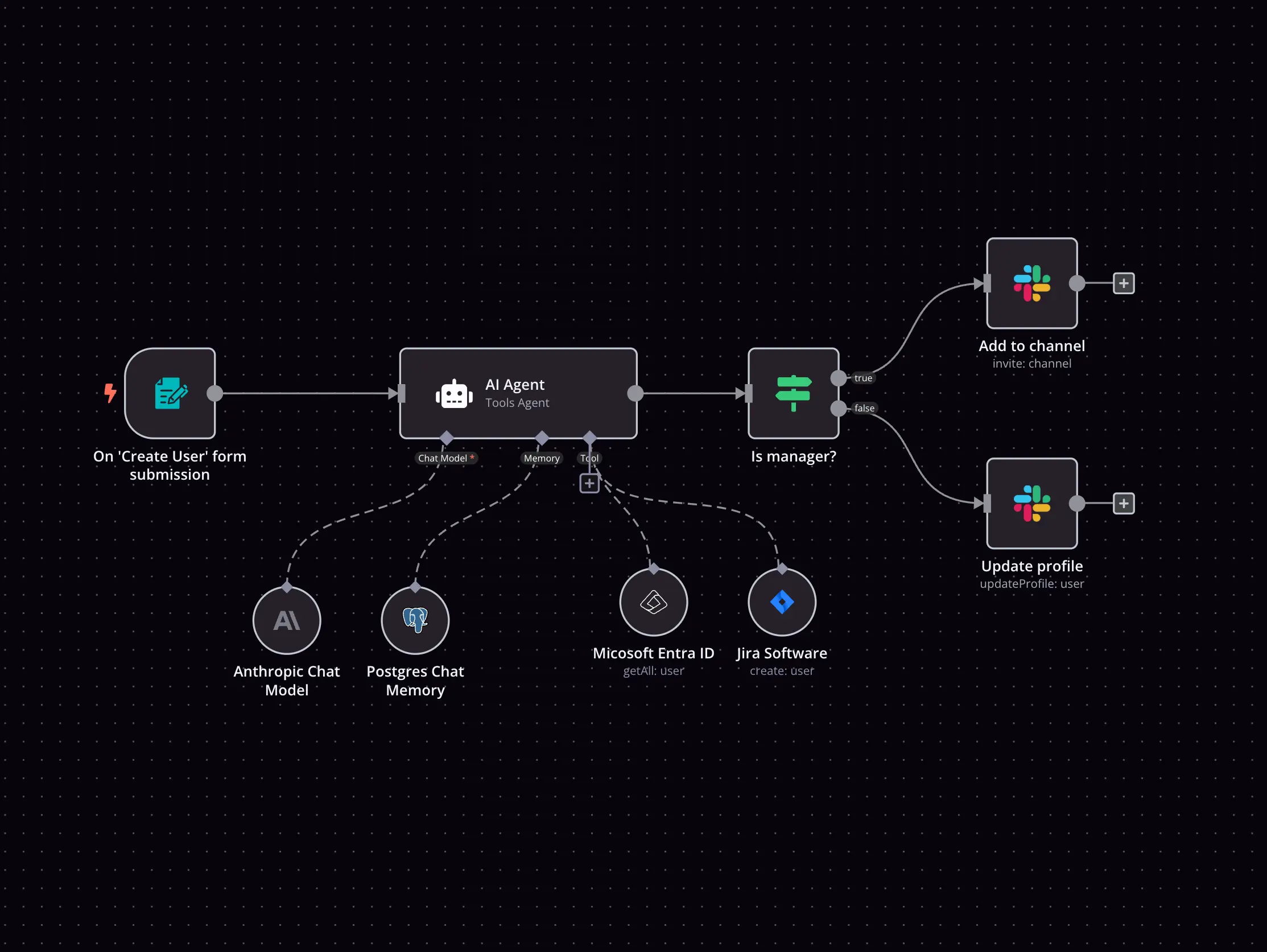F5 Big-IP and Solve Data integration




How to connect F5 Big-IP and Solve Data
Create a new workflow and add the first step
In n8n, click the "Add workflow" button in the Workflows tab to create a new workflow. Add the starting point – a trigger on when your workflow should run: an app event, a schedule, a webhook call, another workflow, an AI chat, or a manual trigger. Sometimes, the HTTP Request node might already serve as your starting point.
Build your own F5 Big-IP and Solve Data integration
Create custom F5 Big-IP and Solve Data workflows by choosing triggers and actions. Nodes come with global operations and settings, as well as app-specific parameters that can be configured. You can also use the HTTP Request node to query data from any app or service with a REST API.
Supported API Endpoints for F5 Big-IP
Get Virtual Servers
Fetches a list of all virtual servers.
Create Virtual Server
Creates a new virtual server.
Get Virtual Server
Fetches a specific virtual server by ID.
Update Virtual Server
Updates a specific virtual server by ID.
Delete Virtual Server
Deletes a specific virtual server by ID.
Get Pools
Fetches a list of all pools.
Create Pool
Creates a new pool.
Get Pool
Fetches a specific pool by ID.
Update Pool
Updates a specific pool by ID.
Delete Pool
Deletes a specific pool by ID.
Get Nodes
Fetches a list of all nodes.
Create Node
Creates a new node.
Get Node
Fetches a specific node by ID.
Update Node
Updates a specific node by ID.
Delete Node
Deletes a specific node by ID.
Get Monitors
Fetches a list of all monitors.
Create Monitor
Creates a new monitor.
Get Monitor
Fetches a specific monitor by ID.
Update Monitor
Updates a specific monitor by ID.
Delete Monitor
Deletes a specific monitor by ID.
To set up F5 Big-IP integration, add the HTTP Request node to your workflow canvas and authenticate it using a predefined credential type. This allows you to perform custom operations, without additional authentication setup. The HTTP Request node makes custom API calls to F5 Big-IP to query the data you need using the URLs you provide.
See the example hereThese API endpoints were generated using n8n
n8n AI workflow transforms web scraping into an intelligent, AI-powered knowledge extraction system that uses vector embeddings to semantically analyze, chunk, store, and retrieve the most relevant API documentation from web pages. Remember to check the F5 Big-IP official documentation to get a full list of all API endpoints and verify the scraped ones!
Supported API Endpoints for Solve Data
List orders
Retrieve a list of orders.
Process order
Processes an order that has been created.
Cancel order
Cancels an existing order.
Return order
Processes a returned order.
Fulfill order
Marks an order as fulfilled.
Fail order fulfillment
Marks an order fulfillment as failed.
Check order fulfillment status
Checks the fulfillment status of an order.
Get payment status
Retrieves the payment status for an order.
List carts
Retrieve a list of shopping carts.
Add item to cart
Adds an item to the shopping cart.
Remove item from cart
Removes an item from the shopping cart.
List returns
Retrieve a list of returns.
List payments
Retrieve a list of payments.
List subscriptions
Retrieve a list of subscriptions.
List products
Retrieve a list of products.
List webhooks
Retrieve a list of webhooks.
List events
Retrieve a list of events.
Track email open
Tracks when an email is opened.
Queue event
Queue an event using the event input data.
List event schemas
Retrieve a list of event schemas.
Merge attributes
Merge various attributes for specified entities.
Handle cart abandoned event
Handle an event when a cart is abandoned.
Create an order
Create a new order.
Create a return
Create a new return for an item.
Delete an order
Delete an existing order.
Delete a return
Delete an existing return.
Perform search
Executes a search query.
List profiles
Retrieve the most recent profiles based on activity.
Create API Key
Create a new API Key via the GraphQL API.
List API keys
Returns all API keys as a connection object.
Create API key
Creates a new API key record and returns the created key.
Update API key
Updates an existing API key record referenced by its id.
Disable API key
Disables an existing API key record as referenced by its id.
Enable API key
Restores a currently archived API key record as referenced by its id.
Create API Key
Generates a new protected API key with a specified name.
Update API Key
Updates the name and notes of an existing API key.
Disable API Key
Disables an existing API key, preventing its use.
Enable API Key
Enables a previously disabled API key, allowing its use again.
Get Token
Gets an access token for a public API key using Basic authentication.
To set up Solve Data integration, add the HTTP Request node to your workflow canvas and authenticate it using a generic authentication method. The HTTP Request node makes custom API calls to Solve Data to query the data you need using the API endpoint URLs you provide.
These API endpoints were generated using n8n
n8n AI workflow transforms web scraping into an intelligent, AI-powered knowledge extraction system that uses vector embeddings to semantically analyze, chunk, store, and retrieve the most relevant API documentation from web pages. Remember to check the Solve Data official documentation to get a full list of all API endpoints and verify the scraped ones!
F5 Big-IP and Solve Data integration details
FAQ
Can F5 Big-IP connect with Solve Data?
Can I use F5 Big-IP’s API with n8n?
Can I use Solve Data’s API with n8n?
Is n8n secure for integrating F5 Big-IP and Solve Data?
How to get started with F5 Big-IP and Solve Data integration in n8n.io?
Looking to integrate F5 Big-IP and Solve Data in your company?
The world's most popular workflow automation platform for technical teams including
Why use n8n to integrate F5 Big-IP with Solve Data
Build complex workflows, really fast
